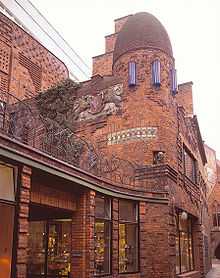Paula Modersohn-Becker Museum

The Paula Modersohn-Becker Museum in Bremen, Germany, is the first museum in the world devoted to a female artist. Modersohn-Becker (1876–1907) was one of the most important early Expressionists, and the museum features key works from each of her creative periods.
History
Construction of the museum was commissioned by the businessman and art patron Ludwig Roselius, who assigned the sculptor, craftsman and architect Bernhard Hoetger to design it. Hoetger had become acquainted with Modersohn-Becker while in Paris, and created a unique Brick Expressionist building in her memory. Opened in 1927, the museum now counts as one of the key works of expressionist architecture in Germany. The collection features works covering the artist's entire career, from the early pictures of her training years in Berlin to the paintings she created in Paris in 1906-07, in which she most fully realised her artistic vision.
Important paintings and drawings from Roselius's collection are supplemented by works on loan from the Paula Modersohn-Becker Foundation. Besides Paula's works, the museum also owns the most extensive collection of works by Bernhard Hoetger (1874–1949). The rooms that he designed are now used for special exhibitions of classic modern art.
Since 1973, the building has been listed under the monument protection act.[1]
The museum is run by the Böttcherstraße GmbH company, named after its location on the architecturally significant Böttcherstraße.
Since 2005, Jenny Holzer's electronic homage For Paula Modersohn-Becker has been permanently installed in the stairwell.[2]
Notes
- ↑ Database of Landesamt für Denkmalpflege Bremen #1503,T (German)
- ↑ Jenny Holzer Museum website. (German)